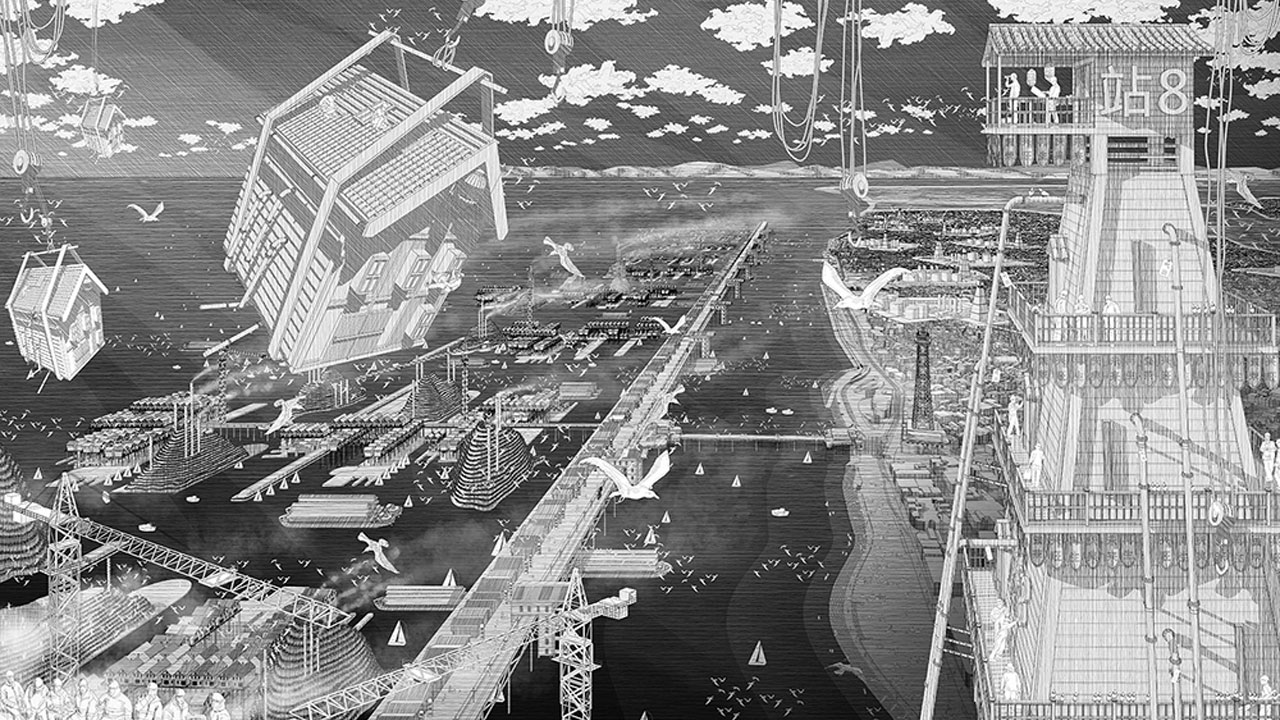London-based architect Jason Lamb wanted to know — “with all the downside [sic] of fracking, is there a way that you could implement fracking with long term benefit to the community?” Lamb took the English city of Blackpool — situated above a bed of shale rock, the geological requirement for the environmentally unfriendly practice — and recast it as a fictional center of frack-fueled wealth.
In Lamb’s “Frackpool,” Chinese investors have turned the town into a self-sustaining natural gas production center. He told Wired how these influences came together for his thesis:
“A lot of the drawings have these Chinese [architectural] references,” he says. “A lot of British architecture ended up over there after the war, and this is kind of a reversal of that, so now Chinese architecture creeps back in to seaside towns.”
His concept town tries to account for the realities of a functioning, fracking-based economy:
In it there are 35 fracking stations in town that use pressurized water to release natural gases, and then, via a series of pipes and pumps, recirculate that water back into the infrastructure for repeated use. Once the fracking has extracted as much as gas as possible, that water would be treated and used for urban farming.
The plans were conceived largely around job creation. He envisions families moving out of the town’s center to make room for fracking infrastructure (jobs) and into floating villages, with urban greenhouses (jobs) and fishing markets (jobs). To avoid turning this fictional town into the Detroit of the fracking industry, Lamb has plotted out new ways to use all the infrastructure in the future, like fish farms in former gas tanks.
Fracking is extremely unpopular among environmentalists. It’s been banned in France and Bulgaria, and New York state allows towns to outlaw fracking on an individual basis. But check out Lamb’s illustrations of Frackpool in the gallery above. (Images: Jason Lamb)



